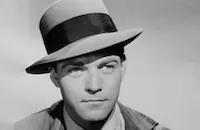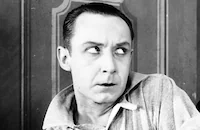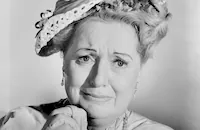See My Lawyer
Cast & Crew
Eddie Cline
Ole Olsen
Chic Johnson
Alan Curtis
Grace Mcdonald
Noah Beery Jr.
Film Details
Technical Specs

Synopsis
At their failing New York law firm, young lawyers Charlie Rodman, Joe Wilson and Arthur Lane, and notary public Otis Fillmore, send their assistant, Willy, to borrow more money from Joe's sister, singer Betty Wilson. When Willy visits her at the Olsen and Johnson show at the Midway Theater, he overhears the comedy duo's manager, B. J. Wagenhorn, refusing to release them from their contract so they can act in a Hollywood movie. When they leave in anger, Willy throws himself in front of their car and then pretends to be injured, prompting them to bring him back to the law office. There, he admits that he planned the ruse in order to suggest that Olsen and Johnson use the law firm to help them get out of their contract. Though the performers are at first furious and try to leave, they witness repossessors stripping the firm of their furniture, and then are told by Betty, who has come to visit, that they should give the boys a chance. Olsen and Johnson realize that, by abusing their audience, they can incur several lawsuits which will simultaneously bring the lawyers some business and convince Wagenhorn it will be cheaper to fire them. During their act that night, Olsen and Johnson infuriate several audience members by playing tricks on them, including hitting Otis in the face with a pie. Soon after, Otis serves Wagenhorn with thirty-nine subpoenas from the wounded patrons. A few days later at the show, Charlie proposes to Betty, who worries about what Arthur will say, as Olsen and Johnson have received a telegram from the studio informing them that their movie roles have been given to a small boy and a sheepdog. Immediately, they run to Wagenhorn to convince him to let them stay, and after they accept his offer to sell them the club at one-tenth its price, he gleefully informs them that they now also own ten million dollars worth of lawsuits. The partners, however, call up their friends, who were merely posing as audience members and pretending to sue, and tell them to call off the lawsuits. As soon as Charlie, Joe and Arthur receive the news that all their business is gone, the repossessors show up again to remove the furniture, but that night Otis serves Olsen and Johnson with his own subpoena for the pie in the face, and the partners ask the lawyers to defend them. At the trial, Otis' mother, acting as his lawyer, has almost won the case, and as Wagenhorn is about to testify that Olsen and Johnson set him up, the duo take over their defense from Charlie. They cause a continual ruckus with elephants and parades, then move the trial to their club, in order to distract the judge from Wagenhorn's testimony. After the judge watches several of their acts, Wagenhorn tells him that he and Otis have dropped the suit. Instead they exact revenge by exploding a package in Olsen's and Johnson's faces while the partners perform. As the lawyers celebrate the conclusion of their first case, Betty runs to Arthur and kisses him instead of Charlie.

Director
Eddie Cline
Cast
Ole Olsen
Chic Johnson

Alan Curtis
Grace Mcdonald
Noah Beery Jr.

Franklin Pangborn

Edward S. Brophy

Richard Benedict

Lee Patrick
Gus Schilling

William B. Davidson
Stanley Clements
Mary Gordon
Ralph Peters
Yvette
Carmen Amaya
The King Cole Trio
Hudson Wonders
Rogers Adagio Trio
The Four Teens
The Christianis
The Six Willys
Edward Gargan
Perc Launders
Franklin Parker
Harry Monty
Elinor Troy

Howard Mitchell
Al Ferguson
Bill Dyer
Hal Craig
Rico Demontez
Bennett Green
Nolan Leary
Allen Fox
James Carlisle
Isabel Lamal
Bobby Barber
Jean Trent
Ronnie Rondell
Vernon Dent
Cyril Ring
George Sorel
George Davis
Mayo Newhall
Beverlee Mitchell
Joe Oakie
Kate Harrington
Harry Monty
Jimmy Zaner
Eddie Dunn
Leon Belasco
Tom Dugan
Geoffrey Ingham
Marie Harmon
Gene Stutenroth
Roy Darmour
Karen Raven

Ruth Roman
Syd Saylor
George Chandler
Crew
Bob Bell
Roy Branker
Bernard B. Brown
Everett Carter
Howard Christie
Nat King Cole
Judson Cox
Stanley Davis
George Dobbs
Sammy Fain
Milton Field
Dave Franklin
John P. Fulton
R. A. Gausman
A. J. Gilmore
John B. Goodman
Joe Greene
Edmund L. Hartmann
Edmund L. Hartmann
Dorothy Hughes
Paul Ivano
Irving Kahal
Stacy Keach
Paul Landres
Robert Pritchard
Richard H. Riedel
Milton Rosen
H. J. Salter
Vera West

Film Details
Technical Specs

Quotes
Trivia
Notes
A February 1944 Hollywood Reporter news item states that the film was originally planned for Abbott and Costello.












